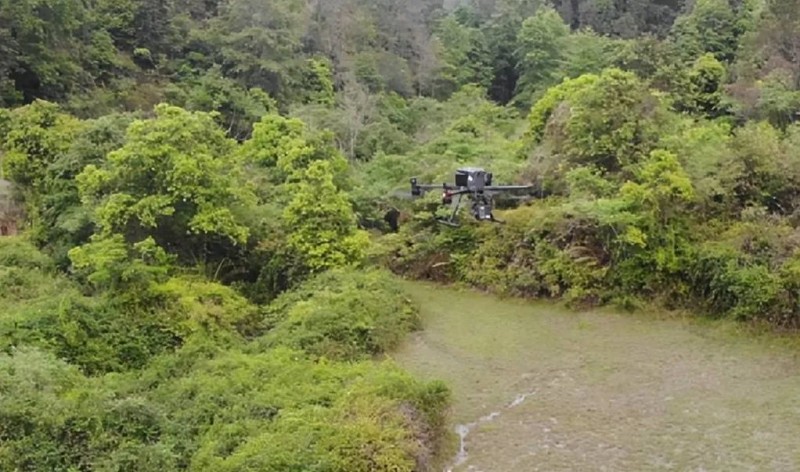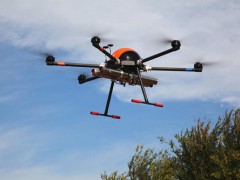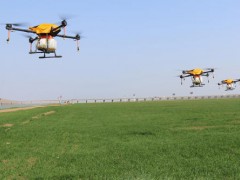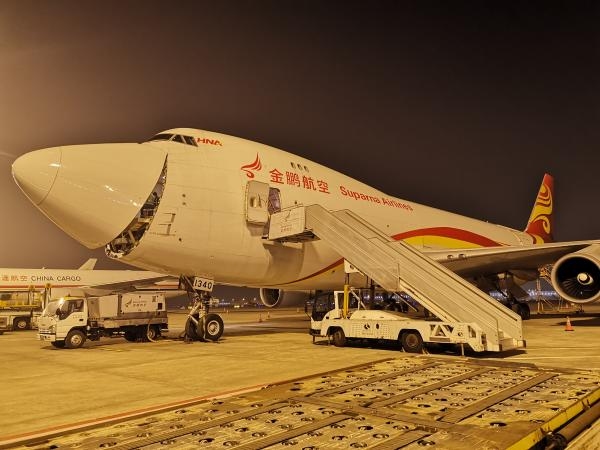北京小哥在日本呼唤出机器飞龙,拿下ICRA 2018最佳无人机论文
-作者:吴彬彬 -

这是一个悬浮在空中的飞龙。
机器飞龙。
能变形的机器飞龙。
就像神话故事中的飞龙一样,这个变形机器飞龙,没有翅膀,但也能在空中穿行变化。
比方,像这样在空中俯首挺立。

比方像这样,在空中俯身盘踞。

是不是超凶猛 ?没错,这个变形机器飞龙的相关研讨,取得了机器人范畴顶级会议ICRA 2018的最佳无人机论文大奖。
这样的一个机器飞龙,有什么用?
前景宏大。关于机器人来说,想要协助人类完成任务,通常体型都不能太小,但假如体型太大,又会面临举动不灵敏的成绩。
这个机器飞龙,更好的处理了灵敏性的成绩。与空中机器人相比,能飞;与微型机器人相比,更强。
举个例子。
比方想穿过一个洞口。盘踞形态的飞龙,直径0.8米,而洞口的宽度0.6米。怎样办?

复杂空中变形,然后像一条龙一样,穿行而过。
就像上面三张动图所展现的那样。



飞龙解密
这个机器飞龙,出自东京大学JSK实验室。
正式的名字叫:DRAGON。
这个名字其实是一个缩写,全称:Dual-rotor embedded multilinkRobot with theAbility of multi-deGree-of-freedom aerial transformatiON。
即:具有多自在度空中变形才能的双旋翼嵌入式多衔接机器人。
这个飞龙是一种模块化的飞行机器人,每个模块上都有一对涵道风扇推进器,可以驱动模块在恣意方向上挪动。
一切的模块经过电动铰接衔接,这个飞龙的神经中枢是一块Intel Euclid,动力来自电池组,可以提供三分钟的飞行工夫。
四个模块组成一条飞龙。如下图所示。
【图见留言】
板载的IMU(惯性测量单元)和Intel Euclid组成飞行控制单元,每个模块上都有一个散布式的控制板(标志为neuron神经元),电子速度控制器(ESC)控制涵道风扇。
目前最多可以组成12个模块互相衔接的大飞龙。
当这个机器飞龙盘踞起来,首尾衔接,可以构成一个“两指夹持器”,也就是用首尾两端拾起物体,就像两根指头那样。
JSK实验室成员Fan Shi把这个飞龙描绘为:“硬件设计的打破,它以美丽的方式将涵道风扇驱动的操纵臂衔接起来,组成空中机器人。”
面前作者
下面提到的Fan Shi是这个飞龙机器人的研讨者之一。
实践上,在ICRA 2018上取得最佳的那篇论文,作者团队包括:Moju Zhao、Tomoki Anzai、Fan Shi、Xiangyu Chen、Kei Okada、Masayuki Inaba。
其中第一作者,是Moju Zhao(赵漠居)。
赵漠居2008年毕业于北京师范大学隶属中学,随后前往日本东京大学学习,并在2018年取得博士学位。

其实,这两年赵漠居不断在研讨飞行机器人。
去年他的研讨效果,也是一个可变形的飞行机器人,只不过来年的方案,只能在二维空间变形,不像往年这个愈加灵敏。

当然,也别小看这个机器人,它也是很有实力的,也能搬植物体飞起来~

据引见,东京大学JSK机器人研讨室创立于1977年,40年来影响了日本与世界几代机器人学者。
比如,这个实验室前几年推出了十分知名的人形机器人HRP-2等。源自这个实验室的机器人公司SCHAFT,在2013年的美国DARPA机器人应战赛中取得了冠军,后被Google收买,然后又被软银买走。

论文
假如你对机器飞龙的论文感兴味, 传送门在此:
https://ieeexplore.ieee.org/document/8258850/

Abstract:
In this letter, we introduce a novel transformable aerial robot called DRAGON, which is a dual-rotor-embedded multilink robot with the ability of multi-degree-of-freedom (DoF) aerial transformation. The new aerial robot can control the full pose in SE(3) regarding the center of gravity (CoG) of multilinks and can render the multi-DoF aerial transformation, which is accomplished by the original two-DoF force vectoring mechanism on each link called the dual-rotor gimbal module. The dynamics is derived on the basis of the special definition of CoG orientation, followed by a control method decoupled into thrust force control and rotor gimbal control. In the thrust force control, the minimum force norm is considered to avoid force saturation, and the rotor gimbal control method is developed to enhance both translational and rotational stabilities during hovering and large-scale aerial transformation. The prototype composed of four links is constructed, and associated preliminary experiments are performed. The feasibility of the novel mechanical design and the proposed control method for the aerial transformation is demonstrated.
—完—
来源:飞机E族,原载地址:http://www.feijizu.com/news/20180621/9834.html欢迎分享本文!




